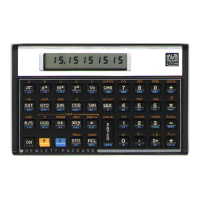28
Section
1:
Using
|
SOLVE
|
Effectively
beginning
of
compounding periods (annuity due)
are
common
in
leasing.
For
payments
at the end of
periods, clear flag
0. For
payments
at the
beginning
of
periods,
set
flag
0. If the
problem
involves
no
payments,
the
status
of
flag
0 has no
effect.
This
program uses
the
convention
that
money paid
out is
entered
and
displayed
as a
negative number,
and
that
money received
is
entered
and
displayed
as a
positive number.
A
financial problem
can
usually
be
represented
by a
cash
flow
diagram.
This
is a
pictorial representation
of the
timing
and
direction
of
financial
transactions.
The
cash
flow
diagram
has a
horizontal time line
that
is
divided into equal increments
that
correspond
to the
compounding
period—months
or
years,
for
example. Vertical arrows represent exchanges
of
money,
following
the
convention
that
an
upward arrow (positive) represents money
received
and a
downward arrow (negative) represents money paid
out. (The examples
that
follow
are
illustrated using
cash
flow
diagrams.)
-~-
Money received
lilt
Money paid
out
Pressing
(T|
CLEAR
|
REG
|
provides
a
convenient
way to set up the
calculator
for a new
problem. However,
it
isn't
necessary
to
press
Q]
CLEAR
|
REG
|
between problems.
You
need
to
reenter
the
values
of
only
those
variables
that
change
from
problem
to
problem.
If a
variable
isn't
applicable
for a new
problem, simply enter zero
as its
value.
For
example,
if PMT is
used
in one
problem
but not
used
in
the
next, simply enter zero
for the
value
of PMT in the
second
problem.

